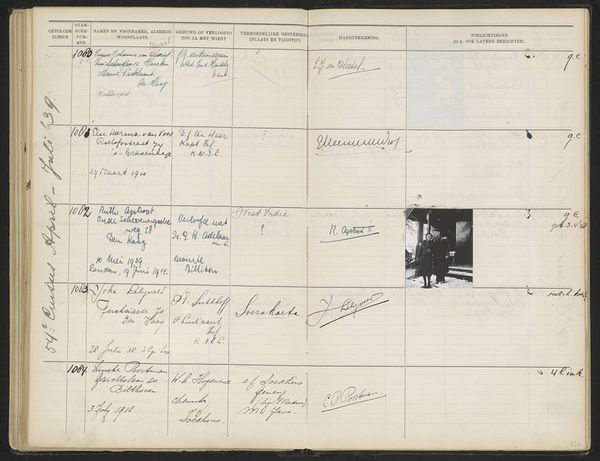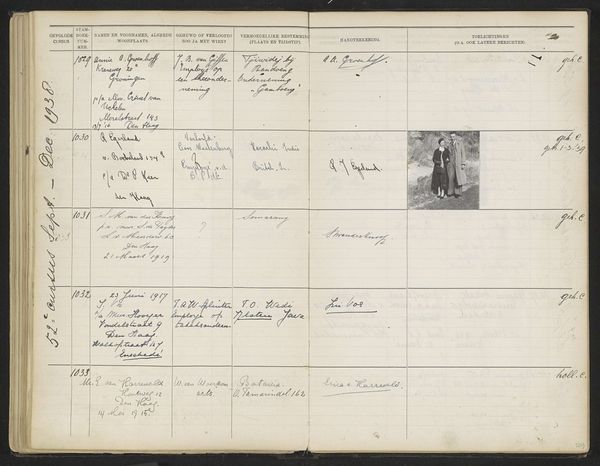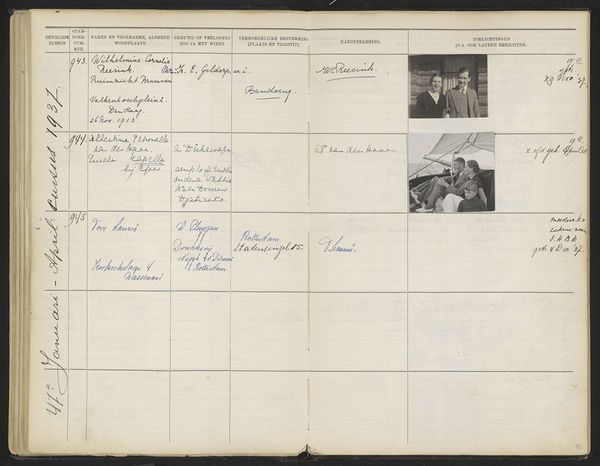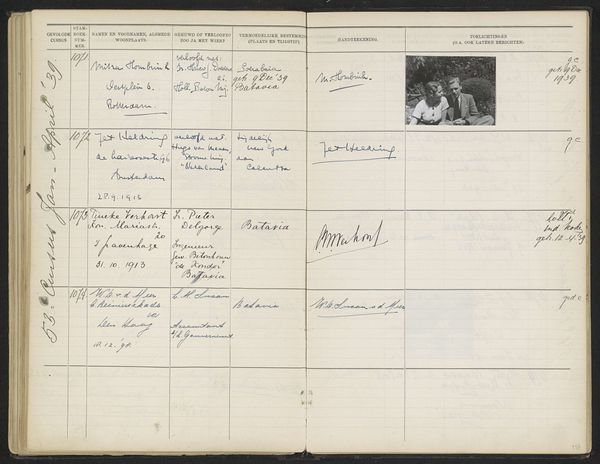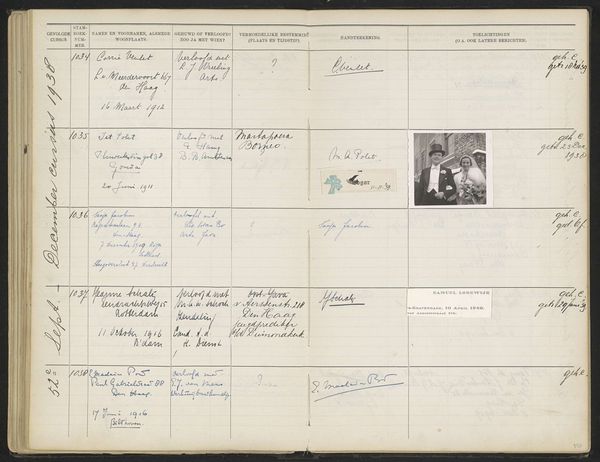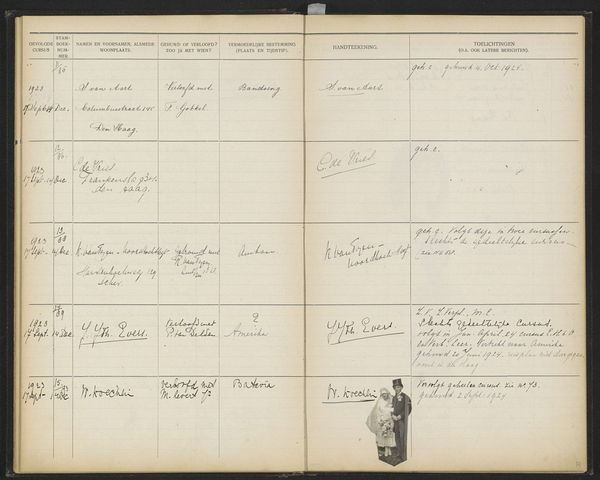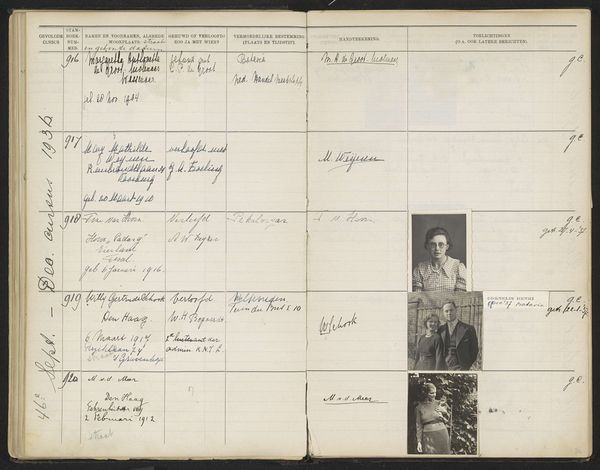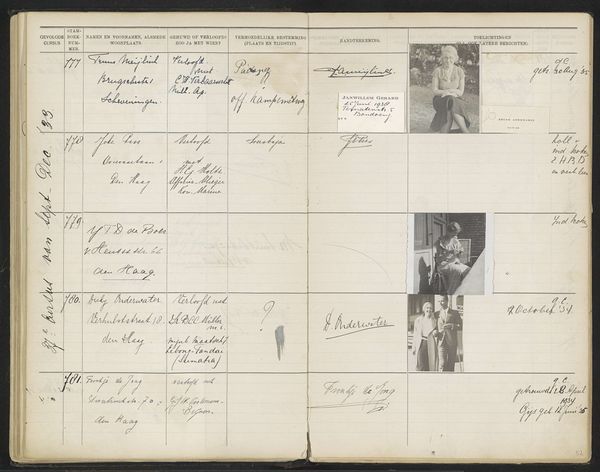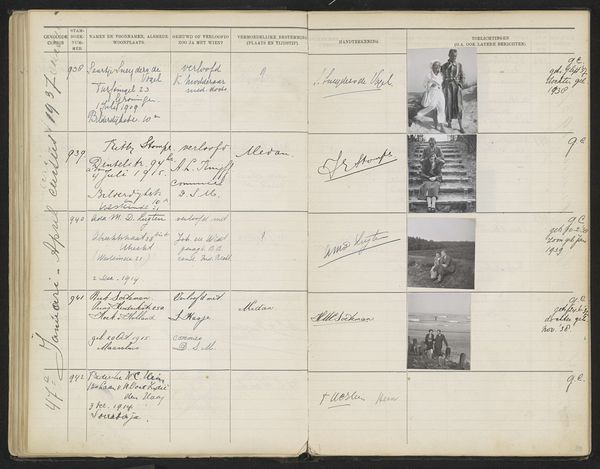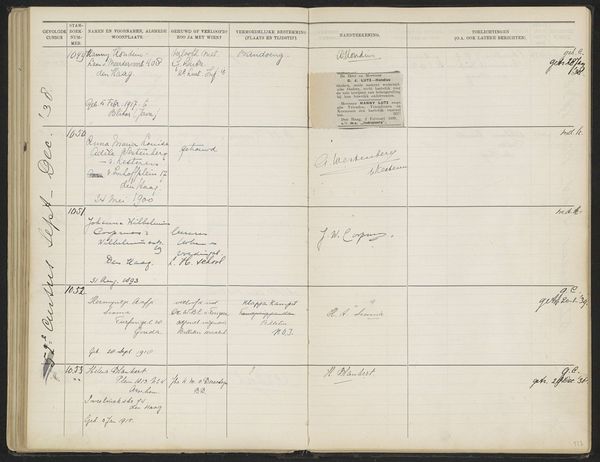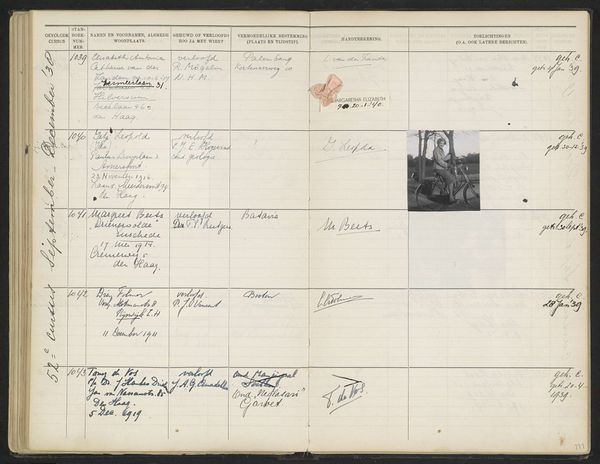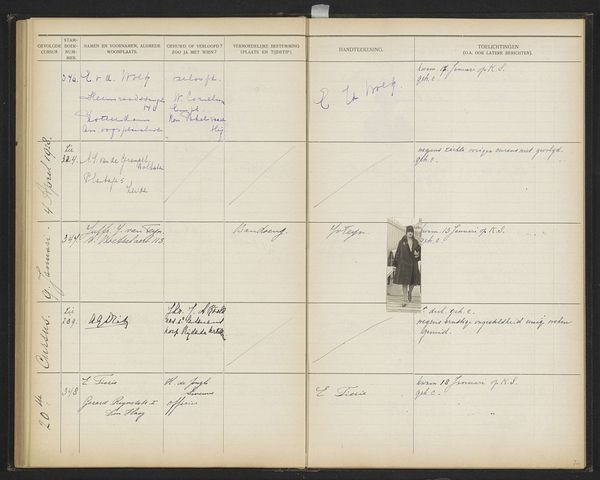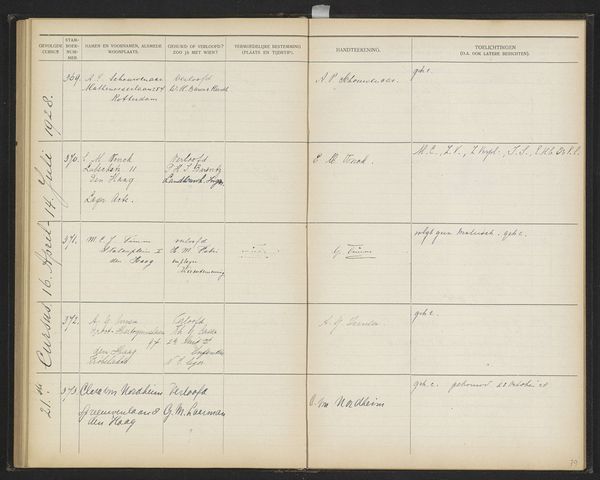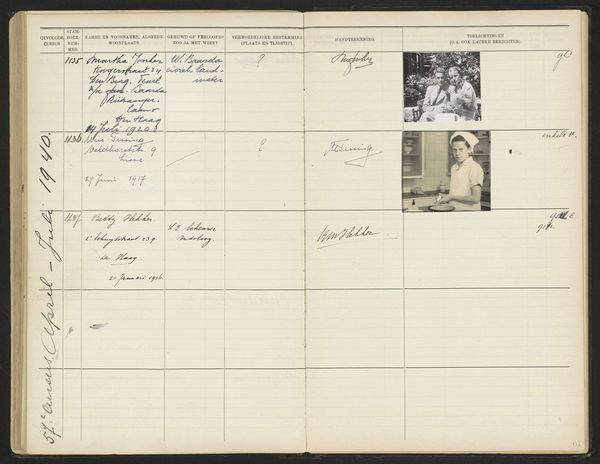
Blad 70 uit Stamboek van de leerlingen der Koloniale School voor Meisjes en Vrouwen te 's-Gravenhage deel II (1930-1949) Possibly 1935 - 1936
0:00
0:00
drawing, print, textile, paper, photography, ink
#
portrait
#
drawing
#
aged paper
#
hand written
#
hand-lettering
#
dutch-golden-age
# print
#
sketch book
#
hand drawn type
#
textile
#
paper
#
photography
#
personal sketchbook
#
ink
#
hand-written
#
hand-drawn typeface
#
sketchbook drawing
#
sketchbook art
Dimensions: height 337 mm, width 435 mm
Copyright: Rijks Museum: Open Domain
Curator: So, here we have "Blad 70 uit Stamboek van de leerlingen der Koloniale School voor Meisjes en Vrouwen te 's-Gravenhage deel II (1930-1949)," potentially from 1935-1936. It seems to be a page from a registry or ledger. Editor: That’s right! The image presents a handwritten and typed document, and what strikes me immediately is the very tangible quality of the aged paper, ink, and textile, and I am keen to better understand this…what exactly do you observe about the means of production? Curator: Well, it's less about individual artistry and more about a system of labor. We see the traces of handwriting – signatures, notes. These aren’t flourishes of artistic expression but evidence of bureaucratic process, the creation of a record. Editor: Bureaucratic, sure… So, in this 'ledger art', how are materials intertwined with broader social structures of the time? Curator: Precisely. Consider the paper itself. Its aging speaks to the document’s preservation, an intended record that would endure. This ties directly into colonial power, this need to record, categorize, and control. The ledger becomes a material manifestation of institutional authority. Editor: The materiality almost becomes the message, doesn't it? That's interesting, so you see its artistic value primarily in that light? Curator: I would suggest that traditional artistic analysis overlooks the importance of this kind of document as a historical artefact… Consider also how different hands are reflected. Editor: Indeed. So the document as both an object and a process revealing details regarding both the schoolgirls but perhaps also a rigid system that needed a tangible tool such as this? Thank you so much. Curator: My pleasure! It helps us view the role of labor, record-keeping, and colonial administration through a different lens, which I believe is what studying Art is about.
Comments
No comments
Be the first to comment and join the conversation on the ultimate creative platform.
